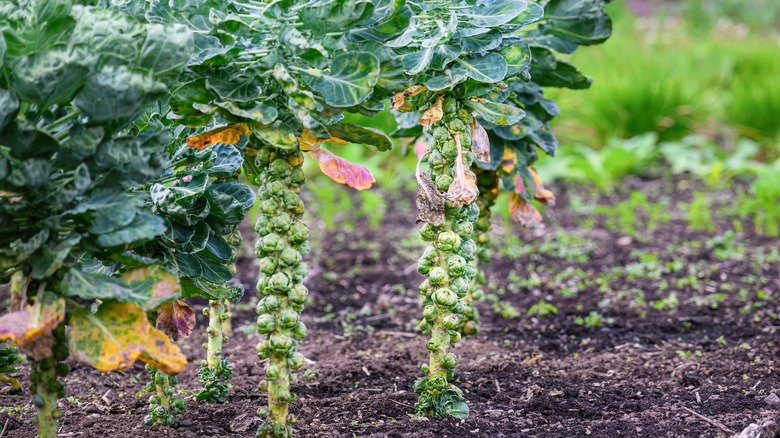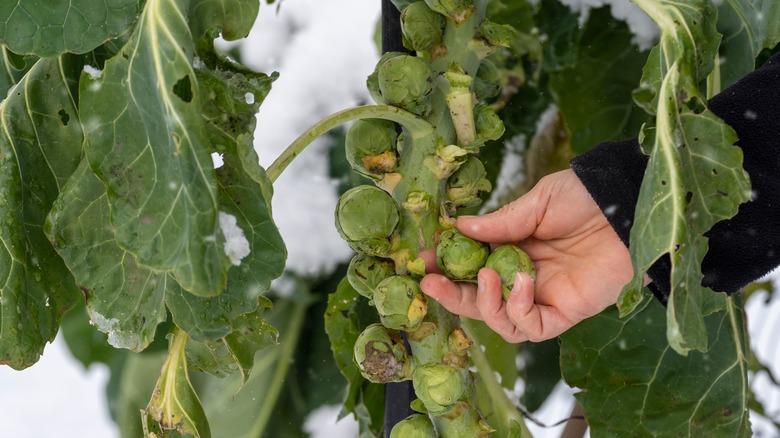The Trick For Harvesting The Best Brussels Sprouts
Brussels sprouts have become increasingly popular in recent years, and in addition to more people eating them, more people are growing them. They're easy to grow and there's nothing quite so satisfying as tending the vegetables growing in your garden and then eating them. Brussels sprouts have a long shelf life in the fridge and can also be blanched and frozen. There's definitely a trick or two to picking at the proper time for the best flavor, which involve the weather and method of harvesting.
You can usually start harvesting your Brussels sprouts by mid-October. Harvesting them individually from the stalk, instead of cutting the entire stalk all at once, is highly recommended. The sprouts mature from the bottom up, so the lower sprouts will be ready for harvest before the smaller ones on the top of the stalk. Harvesting this way means you'll not only enjoy an ongoing harvest but also bigger and better Brussels sprouts.
One secret is that cold temperatures make Brussels sprouts tastier! By all means, start harvesting when they're fully grown, but by letting your Brussels sprouts remain on the plant until after the first or second frost, these green morsels will be even more tender and flavorful after you harvest them. So, give them some time, if you can, once the cold weather arrives, and you may be rewarded with better flavor. Brussels sprouts are a tasty vegetable that will thrive in your early winter garden, can even do well under a blanket of snow, and often keep bearing through January, as long as it doesn't get too cold.
Handy tips for better Brussels sprouts
In addition to allowing your Brussels sprouts to stay on the plant through the colder months, there are some other tricks to getting the most from your harvest. Keep an eye on your plants during the growing season, and remove any yellowing leaves, stems, or sprouts by cutting them off with pruning shears or a garden knife. As you harvest the sprouts from the bottom up, remove the leaves growing below them to keep the plant neat and give those sprouts more room to grow. Don't remove too many leaves at once, or the growth cycle might be affected.
Harvest your sprouts in stages, picking only a few from the bottom of the plant and moving upwards each time. This allows the plant to direct energy to the remaining sprouts, helping them put on size and also enriching their flavor. They may grow up to two inches in diameter and still remain tender and sweet. If, for convenience you need to harvest an entire stalk, wait until most of the sprouts on the stalk have reached at least an inch in diameter.
Another trick is "topping" the plant (cutting off the very top) in autumn, which slows the growth of leaves and allows the sprouts to take center stage. If you're growing these as outdoor plants that thrive in winter weather, watch the forecast and be sure to harvest all the remaining sprouts before the temperature drops below 20 degrees Fahrenheit. This is too cold for them and they might freeze and become damaged, affecting the texture and flavor.

